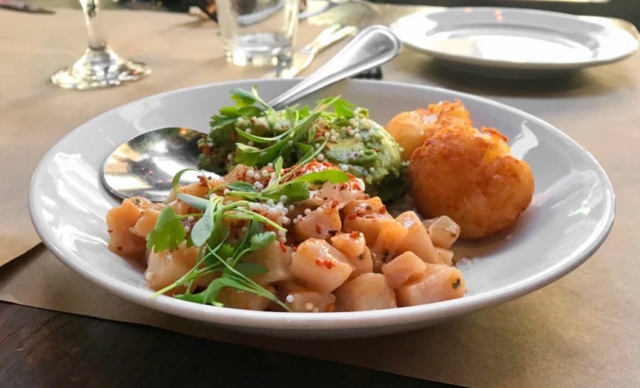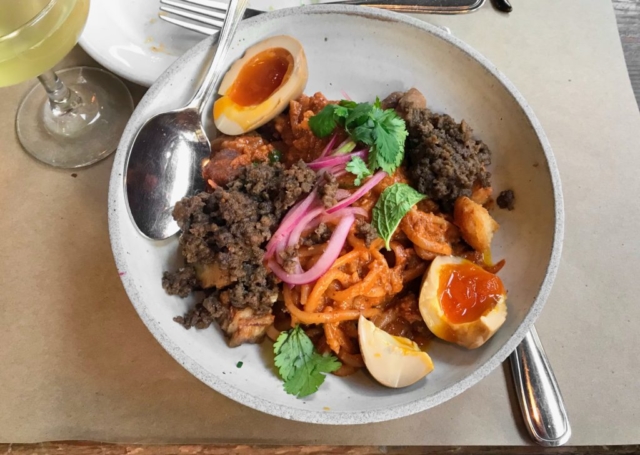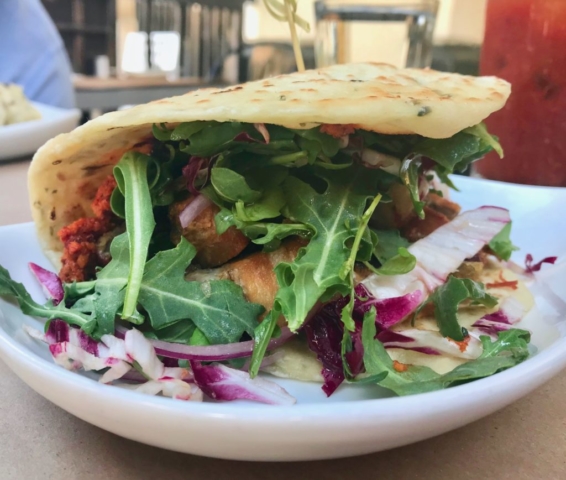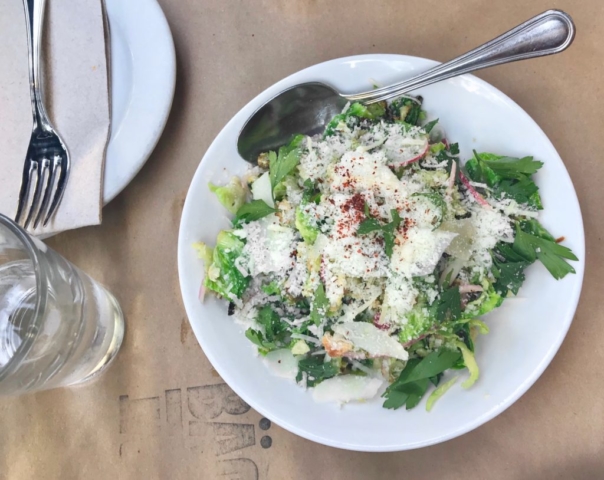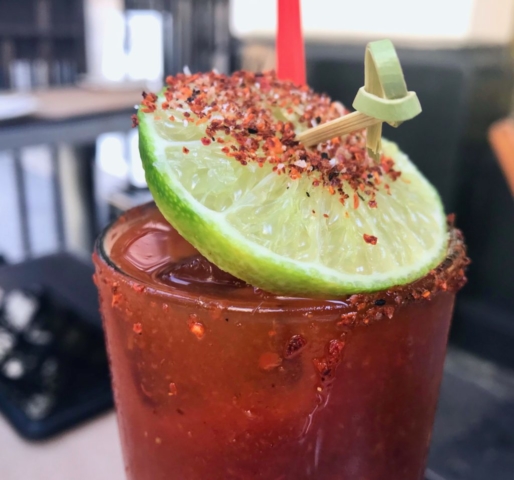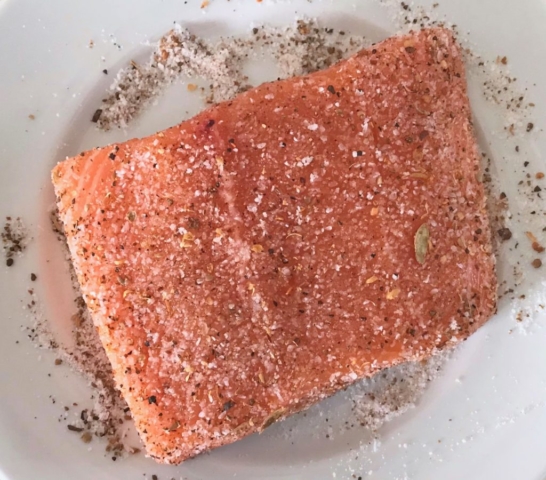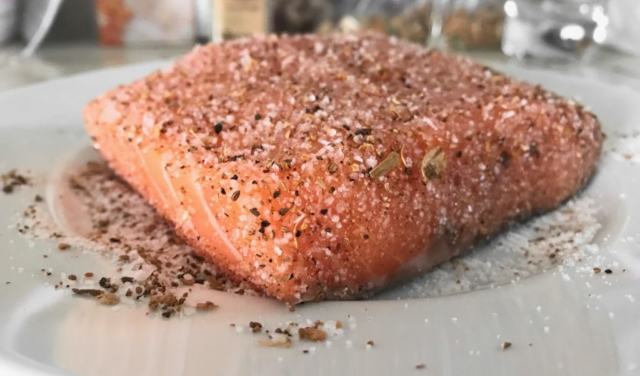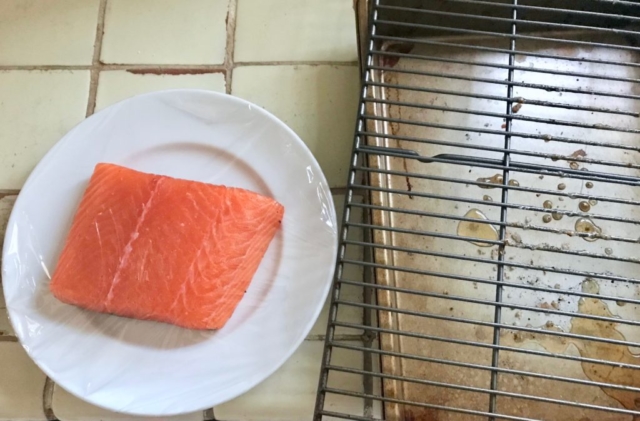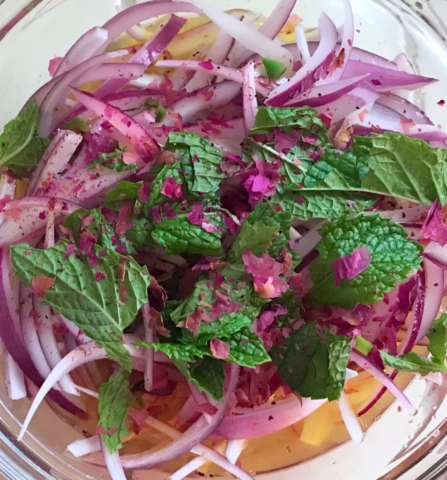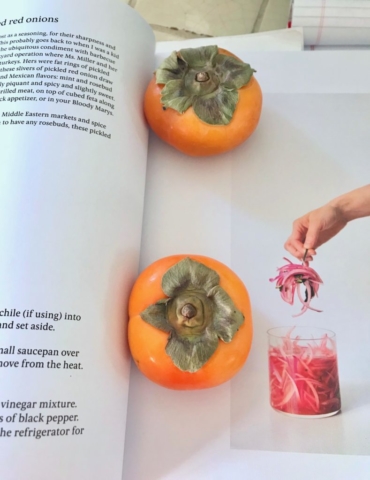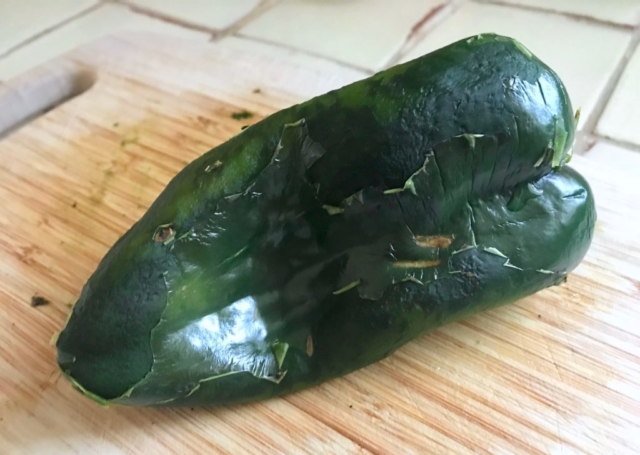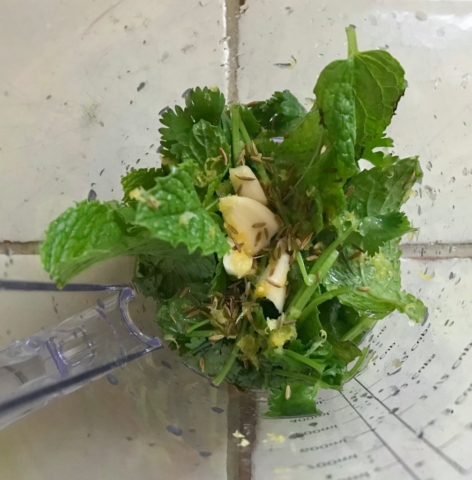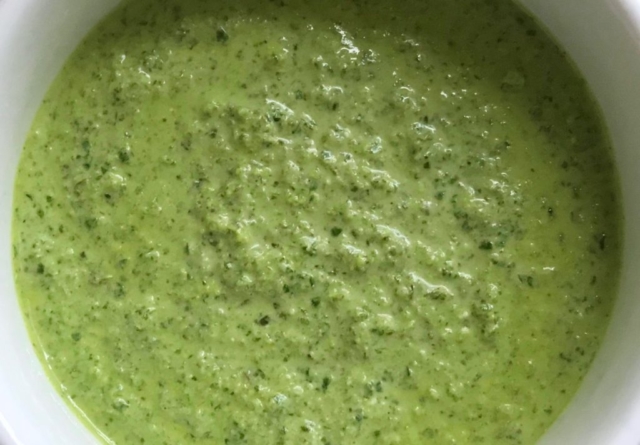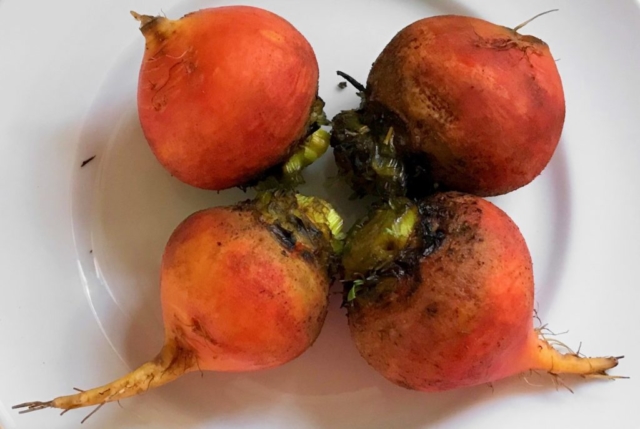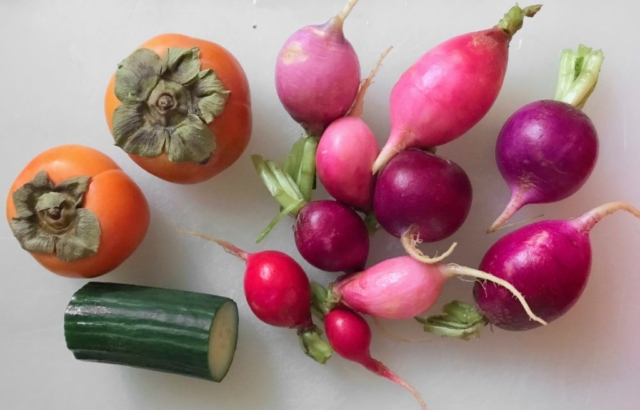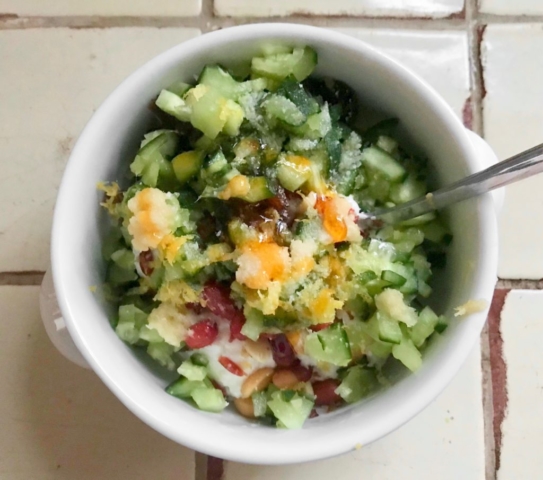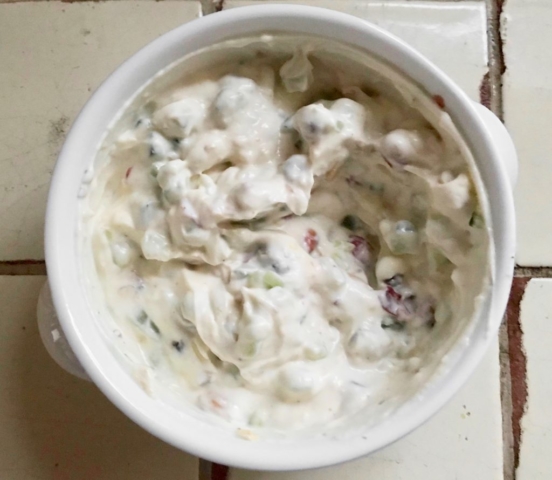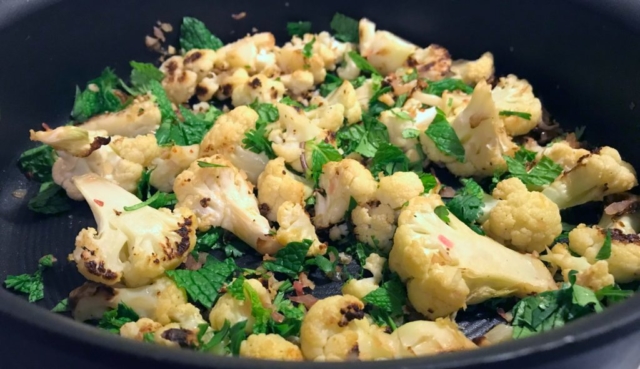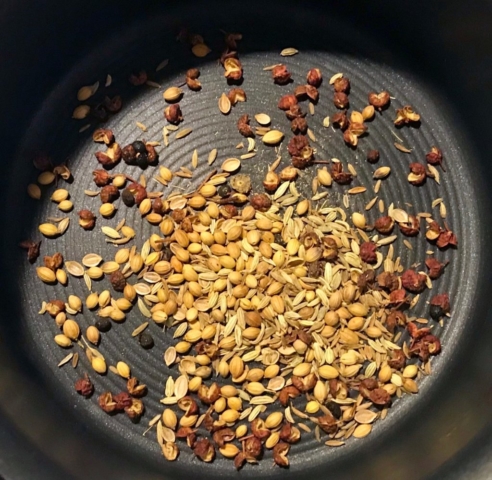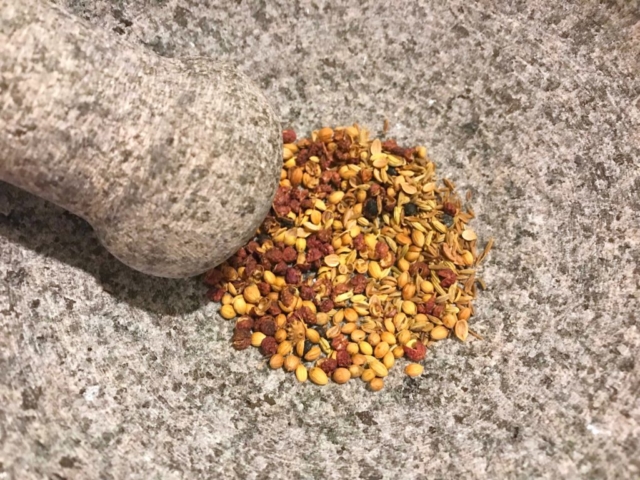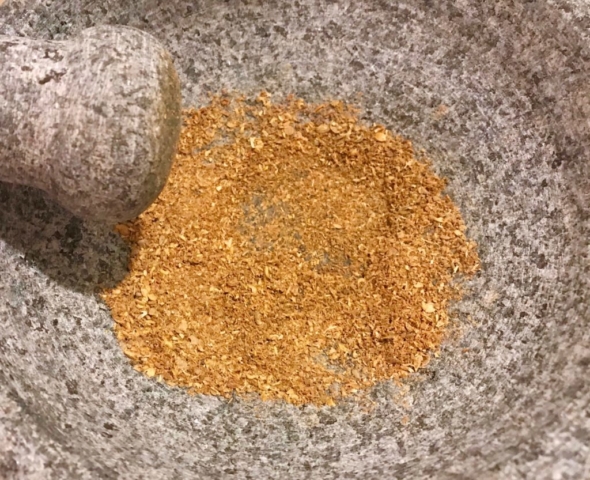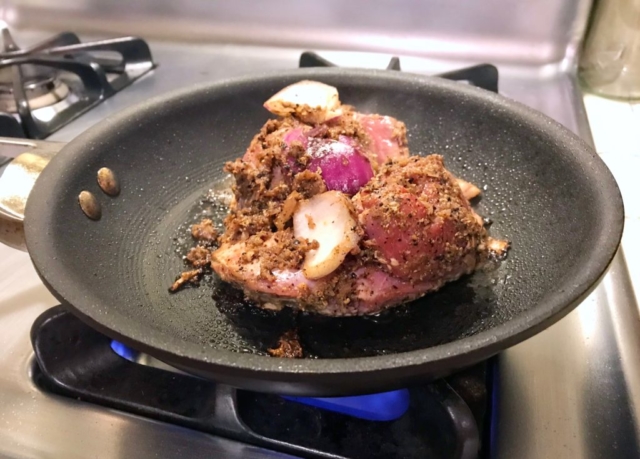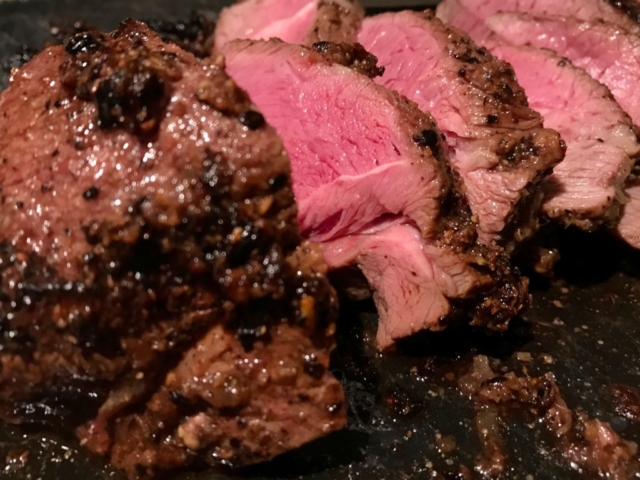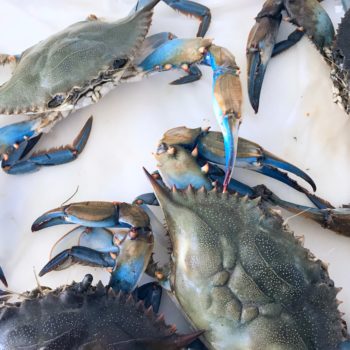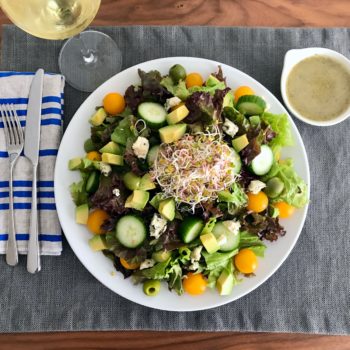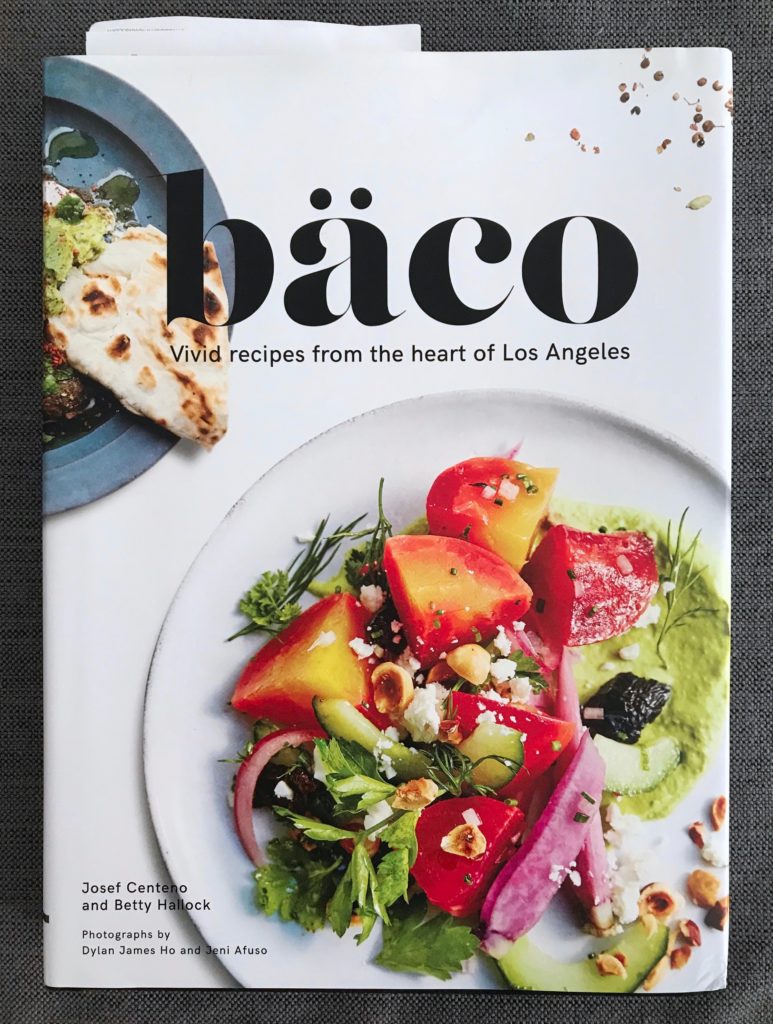
Bäco: Vivid recipes from the heart of Los Angeles
Josef Centeno and Betty Hallock
Photographs by Dylan James Ho and Jeni Afuso
2017
Purchased from Skylight Books in Los Feliz, Los Angeles
Recipes cooked: Mint and rose pickled red onions; poblano-feta dip; caramelized cauliflower with mint, pine nuts, lime, and yogurt; slow-roasted berbere-cured ocean trout; fuyu persimmon salad with grapes, red walnuts, and sherry vinegar; roasted golden beets with radishes, cucumbers, hazelnuts, and creamy poblano-feta dressing; Sichuan pepper lamb top round; Caesar Brussels sprouts
Recipes I want to cook: Baharat-spiced porchetta, lengua “schnitzel,” mortar-and-pestle harissa, pork belly with sujuk spices and hand-torn pasta, canela rice pudding with salty caramel and orange blossom cream
Difficulty to make: Easy
Difficulty to source: Medium
Brunches at Bäco Mercat
I’m lucky. I’ve had the fun of eating at Bäco Mercat, Bar Amá, Ledlow, and Orson and Winston, four of the five restaurants run by Chef Josef Centeno that occupy spaces around the intersection of Fourth and Main in downtown Los Angeles. I’ve been to Bäco Mercat and Bar Amá at least a dozen times between the two of them, and my favorite meal was at Bäco Mercat more than four years ago. It’s a long-ish story, but bear with me. (Or skip to the review!)
My husband (then fiancé) and I spent most of a Sunday being extras in a taping of the reality cooking competition show “Knife Fight,” wherein Los Angeles chefs Phillip Frankland Lee and Natalia Pereira prepared impromptu rival dishes with radishes then foie gras at Top Chef Ilan Hall’s since-shuttered restaurant The Gorbals. We were served heaping trays of hors d’oeuvres, mostly the restaurant’s playfully irreverent bacon wrapped matzo balls, and we received two complimentary drink tickets each to use on any wine or beer the restaurant had on tap. After an hour or so (and two drinks each), my husband asked me to please flirt with the production assistant guarding the roll of paper raffle tickets between setups to get us more free drinks, and I didn’t want to be a bad fiancée, so I skipped the flirting and politely asked. I had been a production assistant once, so I knew what to do. He smiled and gave me at least five.
The NPR “Good Food” radio show host Evan Kleiman was one of the two judges, and we were directed by producers to stand behind her for the cooking portion and react excitedly to everything we saw, which was easy to do. After the raw liver was presented to the competitors and they took what they needed, and the crew shot what they needed, Kleiman handed me the lobe—pinkish-beige, bloody, dense—and encouraged me to tear big hunks from it and share with the others around me. I’d never had raw liver and didn’t know it was even safe to eat (maybe it wasn’t!) but I was thrilled to be a part of the bacchanal. After four hours of taping, I wasn’t ready to go home, and I didn’t think my handsome TV star of a fiancé should drive just yet anyway.
So we walked a couple of blocks to Bäco Mercat, known for its playful, affordable, OG hashtag-foodporn flatbread sandwiches, vegetable side dishes, and homemade sodas. At that time, there weren’t many places in downtown Los Angeles to drop in on in the middle of the afternoon for a really good, casual meal. Grand Central Market was not the destination that it is now, Clifton’s Cafeteria was undergoing its years-long renovation, and the various bars in the vicinity were truly bars—a block from Bäco, La Costena, with an airbrushed sign, gets drag queens, shirtless mariachis, and the occasional accidental Yelper who thinks they love dive bars. (I don’t care how gross the bar is—if it’s full of 20-something reality TV production assistants instead of old guys with fading neck scars and blurry tattoos on their eighth well whiskey at three in the afternoon, it’s not a dive.)
Bäco was almost a stand-alone, still—Centeno’s second restaurant, Bar Amá, had opened less than a year before, so it was really young, toying with “puffy tacos” and radish butter and braised rabbit, none of which are on the menu today. We sat at Bäco Mercat’s bar and probably sort of slurred out our orders. I had my favorite dish, a tender cow tongue schnitzel sandwich with smoky harissa aioli and pickled vegetables and, since I wasn’t the one driving, a glass of sparkling rosé. My husband sobered up on the toron sandwich, with braised oxtail, a big crispy cheddar hash brown, and tangy horseradish yogurt sauce. He insisted that his was better. “I better try another bite of yours, then,” I always say, stifling a cinematic eye roll, when he starts bragging.
Few of you will probably move to LA to get to enjoy Centeno’s tongue schnitzel bäco, Caesar Brussels sprouts, or cold homemade noodles with spicy romesco, fresh herbs, crispy pork belly, rich carne picada, and (no, I’m not finished) a soft boiled egg marinated in harissa and soy sauce with the reddest, gooiest yolk you’ve ever seen. So I urge you—please buy this cookbook.
The book opens with acknowledgments: “This book is part love letter to downtown Los Angeles. Thank you to all of the neighbors, friends, and customers whom we have met here over the years.” The husband-and-wife team go on to thank their staff and many others, including their baby-Chewbacca pups, Bear (in Italian, Orsa) and Winston. (They say in the cookbook that their marble mortar and pestle weighs more than one of the dogs. That is adorable.)
Berbere cured salmon
And it is a love letter to downtown Los Angeles, so I couldn’t write this review without addressing this aspect of it. I shared my favorite Bäco story because when I moved to Los Angeles to date my now-husband, Bäco Mercat was needed. In the summer of 2010, we walked more than ten miles sightseeing around downtown starting late one Saturday morning and couldn’t find a place to get a snack and a drink between 2 and 5 p.m. even in a luxury hotel. We ended up slumped into ripped vinyl chairs at an empty karaoke bar drinking cheap beer and room-temp water in Little Tokyo, so exhausted and hangry we barely spoke. This was pre-Uber.
It is not an overstatement in the least to say that the arrival of Bäco Mercat in late 2011 made downtown a food destination for those who weren’t among the bankers, lawyers, government employees, gallery staffs, small business owners, service industry workers, and flower and apparel and jewelry vendors who commuted there; the opera and symphony and museum goers; or the food blog obsessives who coaxed friends into standing in long lines with them for the ramen at Daikokuya, the ham steak and eggs at the Original Pantry, or the French dip at Philippe (the original). Relatively little existed besides between the Water Grill and the watered-down vodka of neon-lit strip clubs.
So, then, imagine how good the food must be at Bäco Mercat and within the pages of its cookbook. I’ve loved everything I’ve cooked from it, which is impressive, as I’ve strayed considerably from the recipes with the encouragement to do so from its authors. The entire introduction is a celebration of “discovery,” with Centeno concluding that “my main motivation, in cooking and eating, is pleasure. If your heart desires more cumin in the baharat (a Middle Eastern spice blend), no rosebuds in the pickles, Virginia peanuts instead of pistachios in the Egyptian nut-and-seed mixture dukkah, it’s okay to listen to it.” My heart is so happy to see this—and a well-organized table of contents with all recipes listed upfront. (The page numbers took me a minute, though. They’re printed in the middle of each page’s vertical edge!)
Pickles, dips, salads
The first recipe in the Bäco cookbook is for mint and rose pickled red onions. Finally, I had a use for the dried rosebuds I bought in New York last spring. Where some go to Tiffany’s or Gagosian Gallery for the pretty and potentially impractical, I go to Kalustyan’s at 29th and Lex, between Whiskey Rebel and Curry in a Hurry, a half block from where I used to live. Dried rosebuds, yes, but red wine vinegar and fresh basil, no—so I used champagne vinegar and only fresh mint. I loved it.
I was as excited to cook the poblano-feta dip with a new stash of French feta, but I didn’t think there was enough garlic for my liking, so I tripled it. I loved it. I wanted to make the slow-roasted berberé-cured ocean trout with Atlantic salmon instead, so I did. I loved it. I needed to use up my perfectly ripened first-of-the-season fuyu persimmons in a salad of roasted golden beets with radishes, cucumbers, hazelnuts, and the poblano-feta dressing, so I did. I also used roasted Valencia peanuts instead of hazelnuts and omitted two of the fresh herbs. I loved it.
And I’ve learned from it. To make the Sichuan pepper lamb top round, I was thrilled to use some of my favorite spices—tangy urfa biber (the best Bieber), numbing Sichuan peppercorn, and aromatic cumin and coriander seeds. I went to Whole Foods in search of the lamb top round and also nigella seeds. I’ve sized up a lot of raw lamb and scoured a lot of grocery store dried spice displays, and I’d never seen either, so I wasn’t optimistic. But the cookbook said the top round came from a rump cut, so when I saw a large, good-looking hind leg in the case, I asked for a one-pound steak to be cross-cut from the tip-top of it. A staff member let me know that nigella seed is the same thing as fennel seed, which is not true, but since they didn’t sell nigella seeds I added a little bit of fennel seed back at home anyway, eager to build flavor with as much potency as my pantry could provide. I cooked the recipe precisely otherwise, pulling the lamb from the oven when my meat thermometer hit 135. I’ve never cooked lamb more perfectly to medium rare before. Once again, I loved it.
Caramelized cauliflower and Sichuan pepper lamb
The Bäco cookbook is perfect for anyone looking for a new iteration of comfort food. What I’ve always loved about eating at Centeno’s restaurants is that the food is often richly pleasing—this isn’t to say that it’s unhealthy, though it can be if you like fried tongue smeared with yolky aioli and slightly too many glasses of wine from a well curated list as I do—it’s just that it’s not all vegetables overwhelmed by acid, precious to the point of feeling cheated, or limited to “perfect ingredients treated minimally.” Grains, fatty textures, and aromatic spices can really soothe us. My mom is a retired dietician, and I think she seasons like Centeno; she rubs za’atar into meats, sprinkles sumac over salads, and keeps a Tupperware of soft carrot and homemade dukkah spread in the refrigerator year-round. When I was home last, she made herself a Greek yogurt and grain bowl with pomegranate seeds, nuts, and herbs for breakfast, reminiscent of a recipe that appears on page 186. This food is usually good for you, and always good for your soul.
KCRW’s “Good Food” host (and my foie gras benefactor) Evan Kleiman brought up what she called his “high flavor with richness” in a radio interview with Centeno, and I love how he responded: “I think I would attribute that to my fine dining training, and I guess always wanting to use those techniques.” He went on to tell her excitedly about a pea dish he’s working on. This is not the response of a braggart. In the same interview, he shared that “cookbooks and imagination were so important for my development; I didn’t travel out of the country until I was, like, almost 38.” The descendent of Mexican, Spanish, German, English, French, and Polish immigrants, he grew up in San Antonio and has worked at the likes of Daniel in New York (two Michelin stars), Manresa in Los Gatos (three Michelin stars), and Opus in Los Angeles, upon which Pulitzer Prize-winning food critic Jonathan Gold showered praise in the LA Weekly in 2007—really, mostly for Centeno. But he worked harder than you or I can probably fathom to get where he is. In the interview, he talked about collecting cookbooks while working his way up the food chain in New York City, at a time when a cookbook was just “a book with sketches of the food or just a list of ingredients,” and having to start from the bottom again when he moved to Los Angeles in 2004.
Kleiman also recently interviewed Besha Rodell on her show, the last LA Weekly dining critic, and the conversation was kind of heartbreaking. Kleiman asked Rodell to talk about the Los Angeles restaurant culture, and the dichotomy between the “best new anything stories, and folks out there walking the walk who’ve been around for a while who might be in the position of having to reinvent themselves,” to which Rodell responded:
“Our hunger for the best youngest newest chef, I think, is really problematic, and it’s part of the kind of rockstar-ification of the food world. You used to get respect as a chef for sticking around for a really long time, for having had a legacy… I don’t think that it does the [young] chefs that much good. I’ve come across a number of young chefs who I think kind of got swallowed up and chewed and spit out when they weren’t ready for it, and who could resist that? I mean, it’s all these accolades and it’s all this attention and it feels like your career has been made, and then you talk to a lot of these folks a few years later, and everyone’s just moved on, so what does it mean if we’re like ‘this is the best new chef’ and then two years later you don’t ever hear from that person again… [I want to recognize] the grumpy old dude who’s just been doing it every day for twenty years and still gets out there and does it, because those are the chefs that in the past have really changed the way that we think about food or changed the way a city eats, and I despair a little bit at, like, who is that next generation going to be.”
I worry, too. But as much as I think Josef Centeno is changing the way and also the where of how this city eats, and creating a legacy from being the “dude who’s just been doing it every day for twenty years,” I think he is always going to be our best newest chef in LA, as he experiments with new flavors and welcomes us to his newest restaurants and, hopefully, keeps putting out new cookbooks with his brilliant wife, team, and dogs. And lucky pups they are, if a single crumb manages to make its way to the kitchen floor.
No such luck for my dog.

